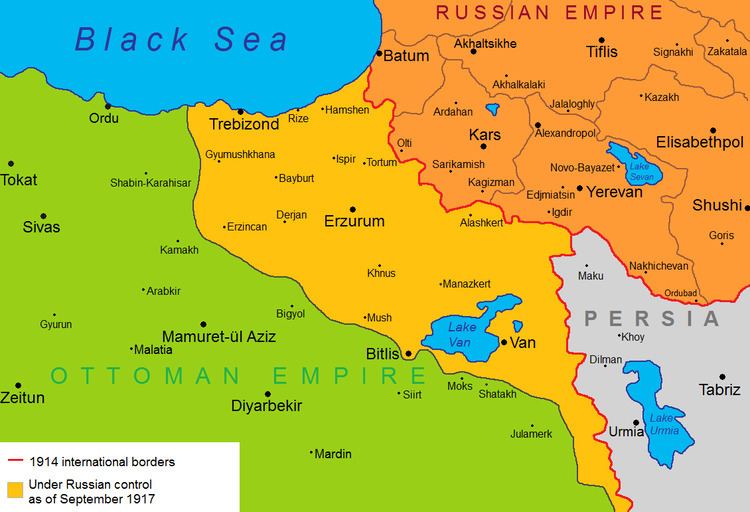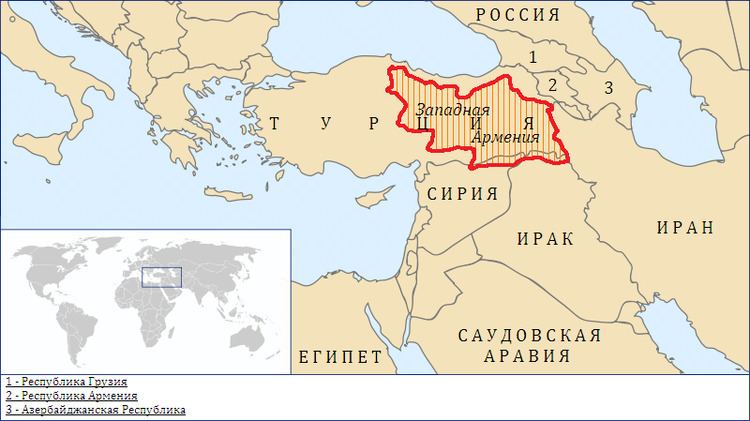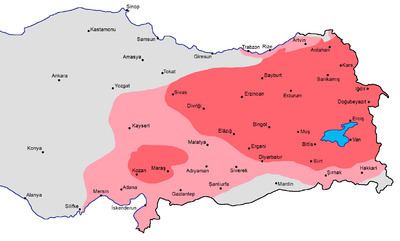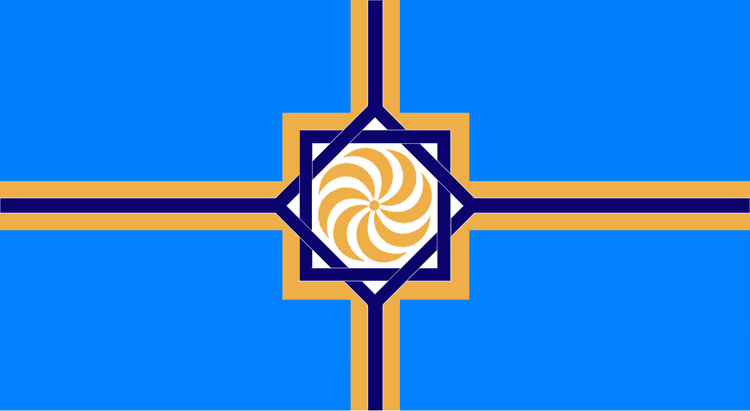 | ||
historic armenia peter musurlian documentary on western armenia 55 of film uploaded here
Western Armenia (Western Armenian: Արեւմտեան Հայաստան, Arevmdian Hayasdan) is a term used to refer to eastern parts of Turkey (formerly the Ottoman Empire) that were part of the historical homeland of Armenians. Western Armenia, also referred to as Byzantine Armenia, emerged following the division of Greater Armenia between the Byzantine Empire (Western Armenia) and Sassanid Persia (Eastern Armenia) in 387 AD.
Contents
- historic armenia peter musurlian documentary on western armenia 55 of film uploaded here
- Personal journey to western armenia journey to the homeland
- Etymology
- Ottoman conquest
- Armenian Genocide
- Caucasus Campaign
- Current situation
- References

The area was conquered by the Ottomans in the 16th century during the Ottoman–Safavid War (1532–1555) against their Iranian Safavid arch-rivals. Being passed on from the former to the latter, Ottoman rule over the region became only decisive after the Ottoman–Safavid War of 1623–1639. The area then became known as Turkish Armenia or Ottoman Armenia. During the 19th century, the Russian Empire conquered all of Eastern Armenia from Iran, and also some parts of Turkish Armenia, such as Kars. The region's Armenian population was affected during the widespread massacres of Armenians in the 1890s.

The Armenians living in their ancestral lands were exterminated or deported during the Armenian Genocide in 1915 and the following years. The over two thousand year Armenian presence in the area largely ended and their cultural heritage was systematically destroyed by Turkey, considered an example of cultural genocide.

Only assimilated and crypto-Armenians live in the area today, and some irredentist Armenians claim it as part of United Armenia. The most notable political party with these views is the Armenian Revolutionary Federation.

Personal journey to western armenia journey to the homeland
Etymology

In Armenian, there are several names for the region. Today, the most common is Arevmtyan Hayastan (Արևմտյան Հայաստան) in Eastern Armenian (mostly spoken in Armenia, Russia, Georgia, Iran) and Arevmdean Hayasdan (Արեւմտեան Հայաստան) in Western Armenian (spoken in the Diaspora: US, France, Lebanon, Syria, Argentina, etc.). Archaic names (used before the 1920s) include Tačkahayastan (Տաճկահայաստան) in Eastern and Daǰkahayasdan in Western Armenian. Also used in the same period were T'urk'ahayastan (Թուրքահայաստան) or T'rk'ahayastan (Թրքահայաստան), both meaning Turkish Armenia.
In Turkish, the literal translation of Western Armenia is Batı Ermenistan, but the region is referred to as Doğu Anadolu (Eastern Anatolia), one of the seven geographical regions of Turkey, despite not being part of Anatolia.
Also some Kurds refer to the southern parts of region as Bakurê Kurdistanê (Northern Kurdistan).
Ottoman conquest
After the Ottoman-Persian War (1623–1639), Western Armenia became decisively part of the Ottoman Empire. Since the Russo-Turkish War, 1828–1829, the term "Western Armenia" has referred to the Armenian-populated historical regions of the Ottoman Empire that remained under Ottoman rule after the eastern part of Armenia was ceded to the Russian Empire by the Qajar Persians following the outcome of the Russo-Persian War (1804–1813) and Russo-Persian War (1826–1828).
Western (Ottoman) Armenia consisted of six vilayets (vilâyat-ı sitte) — the vilayets of Erzurum, Van, Bitlis, Diyarbekir, Kharput, and Sivas.
The fate of Western Armenia — commonly referred to as "The Armenian Question" — is considered a key issue in the modern history of the Armenian people.
Armenian Genocide
During the collapse of the Ottoman Empire Western Armenia remained under Turkish rule, and in 1894–96 and 1915 the Ottoman Empire perpetrated systematic massacres and forced deportations of Armenians resulting in the Armenian Genocide. The massive deportation and killings of Armenians began in the spring 1915. On April 24, 1915 Armenian intellectuals and community leaders were deported from Constantinople. Depending on the sources cited, about 1,500,000 Armenians were killed during this act.
Caucasus Campaign
During the Caucasus Campaign of World War I, the Russian Empire occupied most of the Armenian-populated regions of the Ottoman Empire. A temporary provincial government was established in occupied areas between 1915 and 1918.
The chaos caused by the Russian Revolution of 1917 put a stop to all Russian military operations and Russian forces began to conduct withdrawals. The first and second congresses of Western Armenians took place in Yerevan in 1917 and 1919.
Current situation
Currently, the Republic of Armenia does not have any territorial claims against the Republic of Turkey, although, one political party, the Armenian Revolutionary Federation, the largest Armenian party in the diaspora, claims the area given to the Republic of Armenia (1918–1920) by US President Woodrow Wilson's arbitral award, as part of the Treaty of Sèvres in 1920, also known as Wilsonian Armenia.
Since 2000, an organizing committee of the congress of heirs of Western Armenians who survived the Armenian Genocide is active in diasporan communities.
